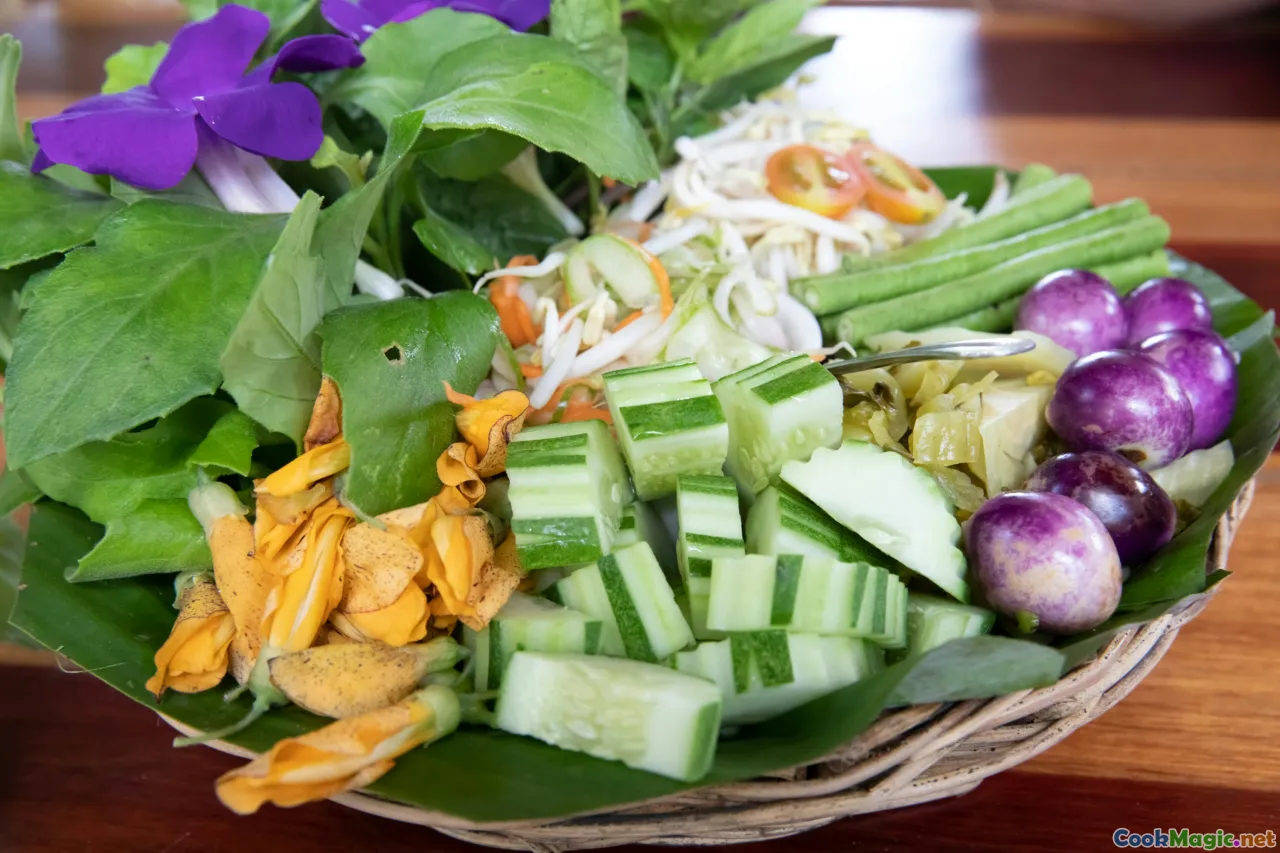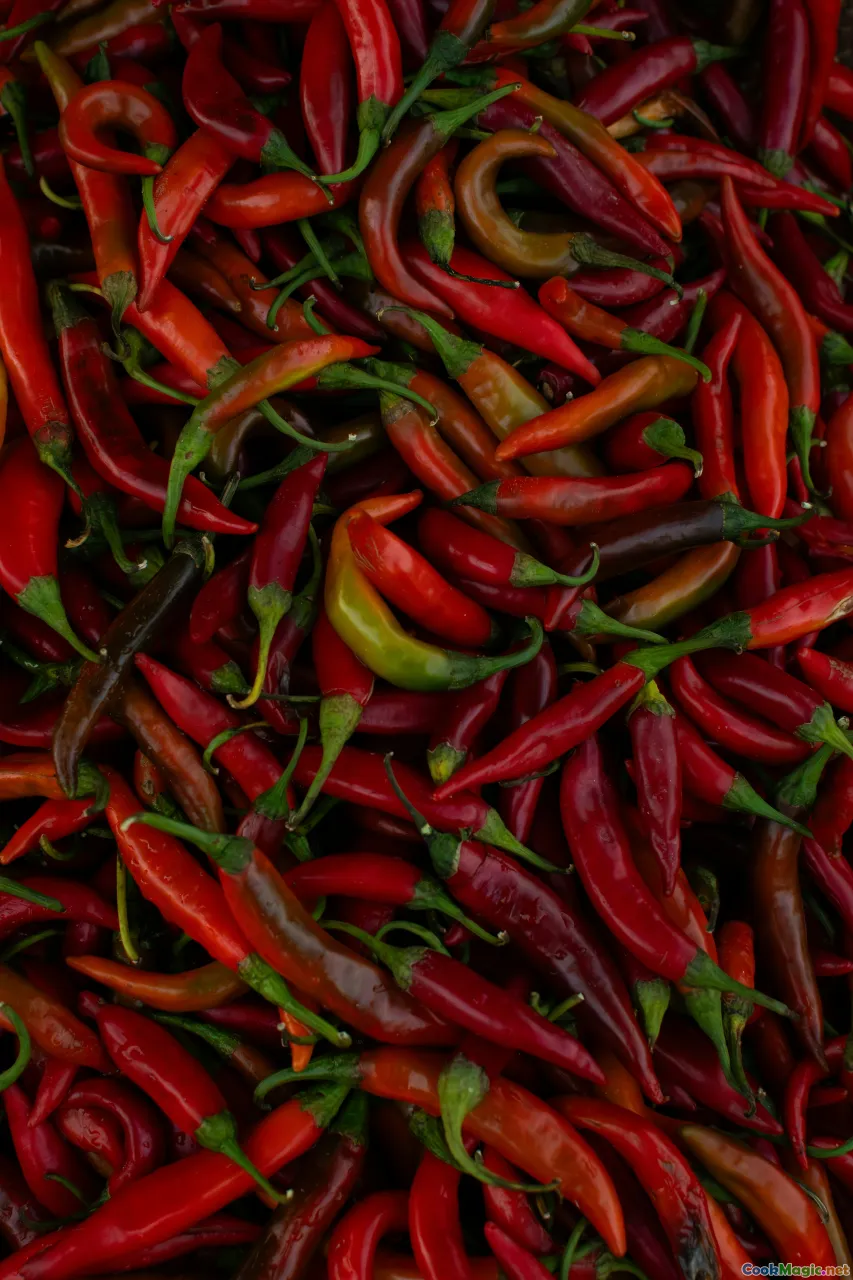Navigating Spice Levels in Laotian Larb Recipes
11 min read Explore how to adjust spice levels in authentic Laotian Larb recipes for personalized flavor and enjoyment. September 07, 2025 06:05
Navigating Spice Levels in Laotian Larb Recipes
Imagine the vibrant bustling markets of Vientiane, the scent of fresh herbs mingling with fiery chilies, and the lively chatter of vendors offering the freshest meats and produce. In Laos, larb (or laap) isn’t just a dish—it’s a cultural tapestry woven with history, tradition, and bold flavors. As passionate culinary explorers, navigating the spice levels of larb can be as delicate as balancing a finely-tuned instrument. It’s about honoring tradition while making space for personal preferences, and mastering the art of creating that perfect mouthfeel—where heat awakens the palate rather than overwhelms it.
This journey into the spicy spectrum of Laotian larb will not only deepen your appreciation for Southeast Asian cuisine but also empower you to craft dishes that are personalized, memorable, and respectful of a centuries-old culinary heritage.
The Heart of Laotian Larb: A Tradition of Balance and Boldness

Laotian larb is more than a salad; it’s a reflection of Lao cultural identity. Traditionally, larb is prepared with minced meat—beef, chicken, pork, or fish—assurged with “laap powder” made from toasted rice, and flooded with a lively dressing of lime juice, fish sauce, and roasted chic rice powder. Fresh herbs—cilantro, mint, green onion—burst with flavor, while red and green chilies bring a fiery kick.
The core philosophy behind larb's spice profile is harmony—the heat elevates without overpowering, uplifting the sour, aromatic, and umami elements to create an ensemble that plays on all senses.
Understanding the Heat: Types of Spicy Ingredients in Laotian Larb

The key to proper spice level mastery is understanding the array of chili options often used in Laotian larb:
- Bird’s Eye Chili (Prik Kee Noo): Tiny but formidable, these peppers pack a blistering punch with intense heat and bright, grassy flavor. Used sparingly, they add the signature fiery edge recognized in traditional laap.
- Anaheim or Larger Bell Peppers: Mild, sweet, and sometimes used to tone down spiciness or provide crunchy texture.
- Thai Chilies: Slightly milder than bird’s eye but with a vibrant aroma.
- Dried Chili Flakes or Powder: Intensifying heat without changing texture.
The laotian approach often involves fresh chilies for their fresh, bright heat and aroma, but dried or powdered chilies have their place, especially when balancing the flavors.
How to Adjust Spice Levels: A Step-by-Step Guide

1. Start Small andTaste GraduallyBegin with a modest amount of chili—perhaps one finely sliced bird’s eye chili for a family-sized batch—and taste as you go. Remember, flavors develop as the dish rests, and heat can intensify.2. Incorporate Mild Elements FirstMix in lime juice, fish sauce, and fresh herbs before adding the chili. This base allows you to perceive the spice's true impact.3. Use Herps and Acid to BalanceA splash more lime or a touch more fish sauce can mellow excessive heat while elevating the aroma.4. Add Spice in LayersRather than adding all chilies at once, introduce them gradually, doing taste tests along the way.5. Use Oil or Nuts A drizzle of oil or crushed peanuts can provide a cooling sensation and balance sharp heat.
Comparing Spicy Variations: From Mild to Fiery

Let’s explore how different spice levels change the customer's experience:
Mild Laab
A gentle warmth—perhaps from milder and larger chilies—accentuates the herbal freshness and tangy bite of lime. It’s approachable for those new to Lao cuisine and highlights subtle nuances.
Medium Spicy Laab
This level introduces a noticeable kick—mainly from sliced bird’s eye chilies in small quantities—creating a lively, tongue-tingling sensation that teases the palate without overwhelming it.
Hot and Fiery Laab
A fiery eruption of heat, where peppers are used generously or even dried chilies ground into powder. Here, chili heat becomes an equal partner with the acidity and umami, demanding careful balance with cooling herbs.
Embracing this scale helps you tailor the dish to your audience—whether they crave a gentle, herbal experience or an adrenaline rush.
Personal Insights: My Journey with Laos Spices

My first encounter with Lao larb was during a trip to Luang Prabang, where a street vendor handed me a small bowl of fiery larb that made my lips tingle with a delightful burn. The vendor smiled mischievously when I hesitated to add extra chili, then refreshed my plate with more herbs, balancing the heat.
Over years of experimenting, I realized that respecting tradition is key, but personal preferences matter. I often prepare two versions—mild for a crowd new to spice and extra fiery for those who want that authentic Lao punch.
The secret lies in layering flavors—adding heat gradually and counterbalancing with acidity, fresh herbs, and crunch—so that each bite feels like a journey rather than a single note.
Tips for Achieving the Perfect Spice Balance

- Use Fresh Chilies for Judgment Calls: Slice one, taste, and decide whether to add more.
- Choose the Right Chili for Your Audience: Bird’s eye is authentic but potent; opt for milder chilies for polite heat.
- Incorporate Cooling Ingredients: Cucumber slices, fresh mint, and lime juice can dampen excessive heat while amplifying freshness.
- Don’t Rush the Process: Let the flavors meld, and taste periodically.
- Record Your Adjustments: Keep notes on spice amounts for future reference.
Cultural and Emotional Connections

In Laos, sharing larb is a communal act—a reflection of hospitality and togetherness. The act of adjusting spice levels often mirrors social nuances: some prefer a gentle warmth shared among elders, while others thrive on the fiery zest enjoyed by youth.
Creating or customizing a larb with balanced spice levels becomes personal, connecting you deeper with Lao traditions and evoking the vibrant communal spirit that characterizes Lao cuisine. It’s a dance of flavors, emotions, and memories—a true testament to how food unites us across borders.
Final Thoughts: Crafting Your Own Lao Spice Symphony
Navigating spice levels in Lao larb is an art, a delicate dance of understanding ingredients, respecting tradition, and weaving in personal flair. Whether you prefer a mild, herb-infused dish or a fiery burst that sparks the senses, the key lies in experimentation, tasting, adjusting, and honoring the essentials of Lao culinary philosophy.
So go ahead—embark on your spice adventure. Create larb that make heads turn, hearts warm, and taste buds dance. After all, in the world of Southeast Asian cuisine, the joy is in the journey—and every spice level tells a story.
Bon appétit and may your larb be ever flavorful and perfectly spiced!









